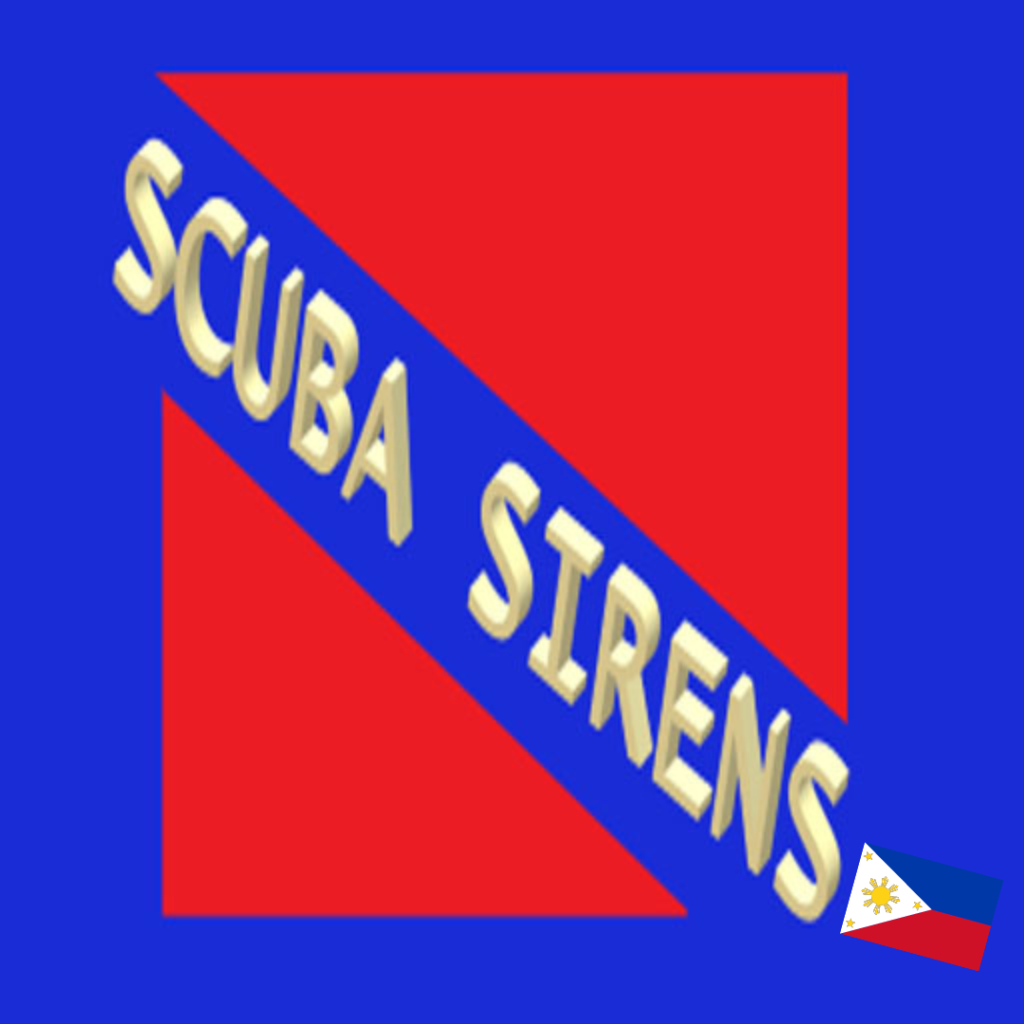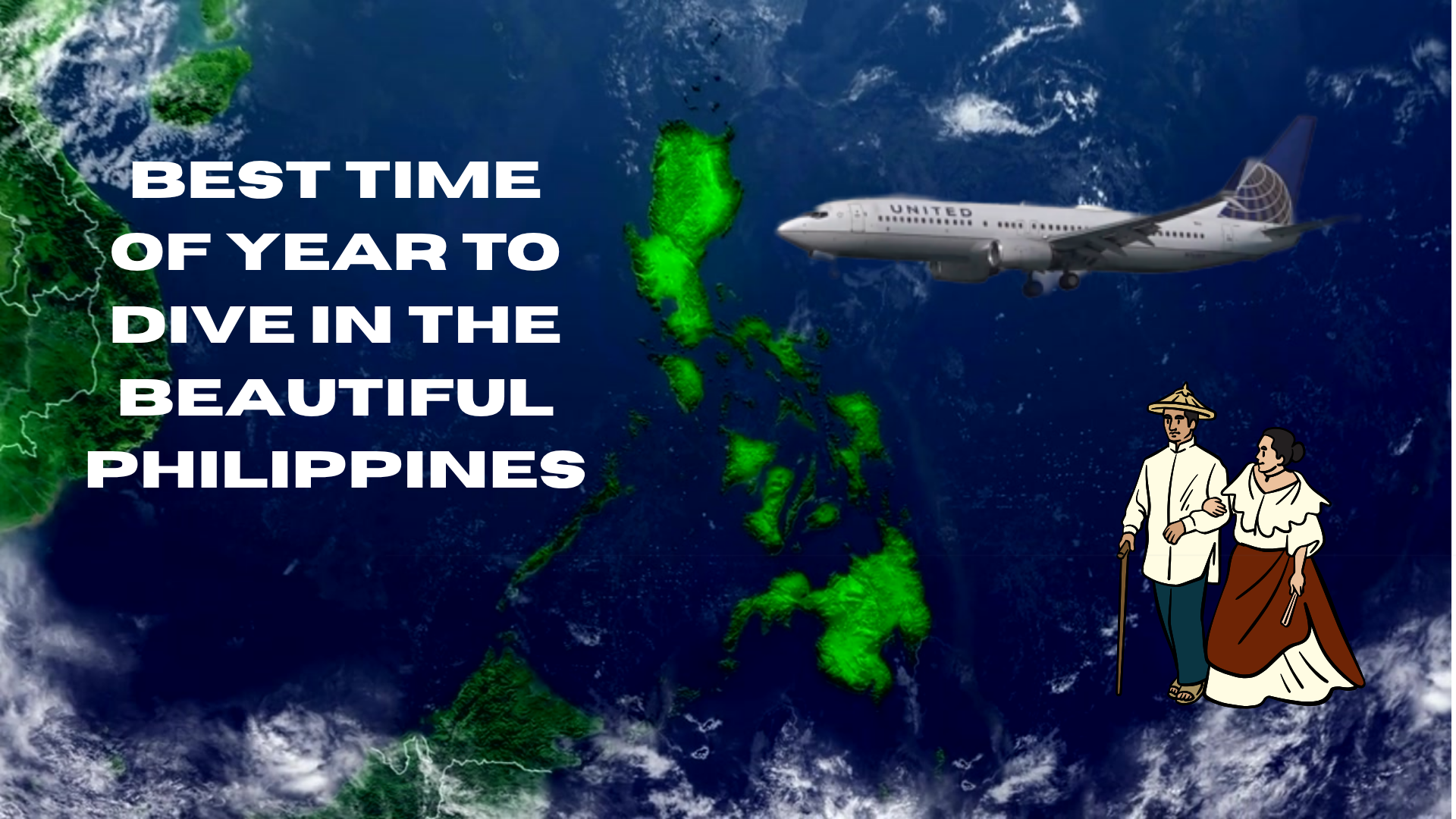Best Time of Year to Dive in the Beautiful Philippines largely depends on where you’re going, your preference for marine life sightings, and weather conditions—but generally, the ideal season is:
🌞 Dry Season (December to May) — Best Overall for Scuba Dive in the Beautiful Philippines
- December to February: Cooler, very clear water; great for visibility.
- March to May: Warm, calm seas and peak diving conditions, especially in Anilao, Puerto Galera, and Verde Island Passage.
The dry season in the Philippines, which runs from December to May, is widely considered the best time of year for scuba diving. During these months, the country enjoys sunny skies, minimal rainfall, and calm seas, making underwater conditions ideal across many dive destinations. This season is divided into two sub-periods—December to February, and March to May—each with its own unique appeal for divers.

From December to February, the Philippines experiences slightly cooler temperatures, both above and below the surface. Air temperatures average between 24°C to 28°C (75°F to 82°F), and water temperatures hover around 26°C to 27°C (79°F to 81°F). This period is marked by exceptional visibility, often reaching 20 to 40 meters, especially in popular macro diving destinations like Anilao in Batangas and Ticao in Masbate. The cooler water encourages the blooming of plankton, which attracts a variety of marine life—from tiny nudibranchs to schooling fish—while still maintaining crystal-clear diving conditions. There are also fewer typhoons or storms during this time, so dive schedules are more reliable. For those who enjoy photography, the stable conditions and crisp underwater lighting make this season perfect for capturing marine critters and vibrant reefs. It’s also a great time for beginner divers, as currents are generally mild and boat rides are smooth.
The period from March to May is often considered the absolute peak of the Philippine diving season. The days become warmer, with temperatures climbing up to 32°C (90°F), and the sea becomes incredibly calm. Water temperatures also increase to around 28°C to 30°C (82°F to 86°F), offering comfortable, long dives in a wetsuit or even just a rash guard. This is the best time to visit world-class diving sites like Tubbataha Reefs Natural Park, a UNESCO World Heritage Site accessible only by liveaboard and open exclusively from mid-March to mid-June. Located in the middle of the Sulu Sea, Tubbataha offers some of the healthiest coral reefs, walls teeming with pelagics, and rare species like manta rays, whale sharks, and hammerhead sharks. The conditions during March to May are near-perfect, with flat seas that make long boat or liveaboard rides more comfortable.
Other top destinations like Puerto Galera, known for its vivid coral gardens and drift dives especially Verde Island Passage, and Coron, famous for its historic World War II wrecks, also benefit from the calm waters and improved underwater visibility during this season. Dive in the Beautiful Philippines for macro lovers, Anilao continues to deliver incredible critter sightings and is home to regular underwater photography competitions held in April or May. This season is also when many local dive festivals and conservation events take place, making it a culturally rich time to explore the Philippines both above and below the surface.
In summary, the dry season from December to May offers the most reliable, enjoyable, and visually stunning diving experiences in the Philippines. Whether you’re after big animals, macro life, wrecks, or simply calm, beautiful underwater scenery, this half of the year is the ideal time to dive.
Highlights:
- Tubbataha Reef is only open March to mid-June, making March–May the golden window.
- Best visibility across most sites (~20–40m).
- Fewer typhoons or rain interruptions.
🌧️ Wet Season (June to November) — Still Diveable, But Variable Dive in the Beautiful Philippines
- Some regions, especially in Visayas (like Bohol, Cebu, and Dumaguete), remain diveable year-round.
- Rain can reduce visibility and increase surface chop, especially on the Pacific side (e.g., Puerto Galera,Ticao, Subic Bay).
The wet season in the Philippines, which runs from June to November, is often seen as the off-peak period for scuba diving due to its association with monsoon rains and the potential for typhoons. However, this doesn’t mean diving is off-limits during these months. In fact, for many regions—especially those sheltered from the Pacific weather systems—diving can still be excellent, and for seasoned or budget-conscious divers, it can be a rewarding time to explore underwater sites with fewer crowds and more affordable travel options.
Subic Bay generally offers good diving conditions year-round, but the best time for diving is during the dry season, from November to May. However, even during the Southwest Monsoon season (June to October), diving can still be enjoyable, especially in the more sheltered areas of the bay.

This season brings rain and potential for stronger winds and currents in Subic Bay.
Visibility:Visibility can be more variable during this time, but some divers report that it can still be good, particularly in more sheltered areas.
Protected Waters:Subic Bay’s geography provides some protection from the open sea, making it possible to dive even during the monsoon season,
Visibility can change dramatically from day to day, so it’s recommended to visit dive sites multiple times during your stay.
Currents:Currents are generally mild to non-existent, making it a great location for all levels of divers.
Water Temperature:Water temperature is consistently warm, ranging from 22-28°C (72-82°F) throughout the year.
Wetsuits:A 2-3mm shorty wetsuit or a 3mm full suit is generally sufficient for most divers, according to Mangos Dive Center a dive shop I frequent.
One of the key advantages of diving during the wet season is that fewer tourists are around, resulting in less crowded dive sites, discounted accommodations, and often more personalized service from dive shops and resorts. This is particularly true for destinations like Subic Bay, Puerto Galera and Ticao, where the rainy season does not automatically mean non-stop storms or dangerous conditions. Rain in the Philippines often comes in short, intense bursts—typically in the late afternoon or evening—leaving mornings and early afternoons relatively clear for diving.
Puerto Galera, located on the sheltered coast of Oriental Mindoro, is one of the most reliable year-round dive destinations in the country. Even during the wet season, its unique geography protects its bays and dive sites from the full brunt of typhoons and heavy waves. Puerto Galera’s dive spots like Canyons, Sabang Wrecks, and Kilima Steps remain accessible, offering everything from drift dives with large pelagics to shallow coral gardens ideal for beginners and macro enthusiasts. Since the rain mostly affects surface conditions, underwater visibility typically remains good, averaging 10–20 meters, especially when diving early in the day. Local dive operators are experienced in adapting schedules to avoid sudden weather changes, ensuring safe and enjoyable dives even during the monsoon season.
In addition to its sheltered bays and coral gardens, Puerto Galera is renowned for its world-class drift diving, especially during the wet season when currents can be stronger and more exhilarating. Sites like The Canyons, Washing Machine, and Kilima Steps become prime locations for thrilling drift dives, where divers are gently—or sometimes swiftly—carried along by the current over rich seascapes teeming with life. These sites attract schools of snapper, barracuda, trevally, and occasional reef sharks, offering dynamic, action-packed underwater experiences. Dive guides are highly skilled at navigating these conditions, making Puerto Galera a favorite destination for adventurous divers even during the rainy months.
Ticao Island, located in the Bicol Region and facing the Ticao Pass, also remains diveable in the wet season but presents a slightly different challenge. While it lies on the Pacific side, which is more exposed to weather systems coming from the east, it becomes an attractive destination from July to September, especially for experienced divers seeking thrilling encounters with big marine life. Ticao is known for strong currents and deep dives, which can become even more pronounced during this season, but it’s also when manta rays, whale sharks, and even tiger sharks are more frequently spotted in sites like Manta Bowl. For those comfortable Dive in the Beautiful Philippines in dynamic conditions, this makes Ticao one of the most exciting and underrated places to dive in the Philippines during the wet months. The region also offers untouched reefs and unique topography with fewer divers, giving a sense of exclusivity and adventure.
That said, there are trade-offs. The months of August to October are typically the most active for typhoons, which can cause dive cancellations, especially in more exposed areas. While dive shops monitor forecasts carefully and won’t operate if it’s unsafe, travelers should build some flexibility into their plans. Additionally, currents may become stronger, making some dive sites unsuitable for beginners. Visibility can drop, particularly if there’s heavy surface runoff from rain, and boat rides may be rougher on windy days.
Elsewhere in the Visayas, Bohol, Cebu, and Dumaguete continue to offer relatively stable diving throughout the wet season. These areas are more protected and benefit from favorable underwater topography that minimizes the impact of the rainy season. Notably, Malapascua, off the northern tip of Cebu, is at its best for thresher shark sightings between July and September, as the cooler temperatures and shifting currents increase the chances of seeing these elusive sharks during early morning dives at Monad Shoal.
In conclusion, while the wet season from June to November introduces more variable conditions, it doesn’t eliminate the possibility of outstanding Dive in the Beautiful Philippines. Puerto Galera offers reliable year-round diving in calm bays even during storms, and Ticao gives thrill-seekers the chance to witness pelagics and mantas in a more rugged, wild setting. The trade-off for managing slightly unpredictable weather is a more peaceful experience, lower costs, and the possibility of encountering rare marine life. For experienced divers or those seeking more solitude, the wet season may, in fact, be one of the best-kept secrets of Dive in the Beautiful Philippines.
Pros:
- Fewer tourists, cheaper accommodations.
- July to September is best for thresher sharks in Malapascua.
Cons:
- Possible typhoons and unpredictable weather, especially August to October.
- Stronger currents in some areas.
🌊 Scuba Dive in the Beautiful Philippines Region Tips:
| Region | Best Time | Notes |
|---|---|---|
| Anilao | Nov–May | Best macro photography, clear water |
| Puerto Galera – Verde Island Passage | Year-round (peak Dec–May) | Calm dive sites, vibrant reefs |
| Tubbataha | Mar–mid-June only | Remote liveaboard-only UNESCO reef |
| Ticao | December-May | Manta Ray cleaning station |
| Malapascua | Nov–May (for sun), July–Sept for thresher sharks | Early morning shark dives |
| Apo Reef | Feb–June | Great for big fish, limited season |
| Coron | Oct–June | Best wreck diving in clear water |
| Dumaguete/Siquijor | Year-round | Good mix of macro and reef life |
| Bohol & Panglao | Year-round | Slightly sheltered from wet season |
| Subic Bay | Year-round | Wrecks with reduced rainfall interference |
🐋 Marine Life Calendar to Dive in the Beautiful Philippines
- Thresher Sharks (Malapascua): All year, best Dive in the Beautiful Philippines July–Sept
- Whale Sharks (Ticao, Leyte): Feb–April
- Manta Rays (Tubbataha, Ticao): March–June
- Nudibranchs & Critters (Anilao, Dauin): All year, peak in dry season
- Wreck Diving (Coron, Subic): Best Nov–May
✅ Summary
| Time | Best For |
|---|---|
| March–May | Clear weather, best visibility, Tubbataha open |
| Dec–Feb | Cool but dry, fewer crowds |
| June–Nov | Lower prices, but riskier weather |

